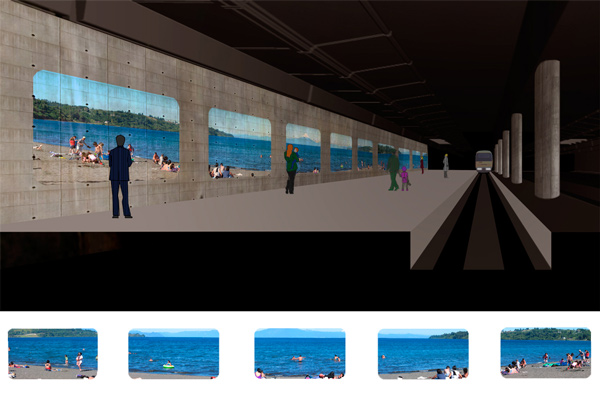
Through a projection device that evokes the perceptual experience from the train, the viewers will be invited to lose themselves in images during their wait. The projections acting as windows, the station itself becomes a train that loses its spatial and temporal rails, itinerant across the earth.
From the salt flats of Uyuni to the roads of Saigon, from the plains of Siberia to those of Patagonia, from the Honshu-Shikoku Bridge to the Orinoco River to central Montreal to the outskirts of Rio de Janeiro to Johannesburg’s Soweto to a Kensington street to Oaxaca market to Plaza Mayor to the Sicilian coast to Jalpur to Alexandria to Fortune Bay to Kualalampur to Ulan Bator to Den Haag to Reykjavik to Marienville to Tallinn to Corbridge to Buenaventura to Faisalabad to Muscat to Adana to Kinshasa to Xiangkhoang to Arrecife to Krakow to Pusan*… the Malmö C station will travel the world. Itineracy, like a lost river, flows continually into an underground passage. It is said that one never steps in the same river twice; comparably, the Itineracy installation is elaborated in such a way that it is unlikely that a viewer on a fixed schedule will see the same image time and again.
In terms of tempo, Itineracy is conceived as a release for the individual viewer. The recorded images are slowed down, in contrast with the speed of everyday urban life, in order to ease the experiential flow of time.
In symbolic terms, this artwork highlights the importance of the Central Station as a node; in its primary sense, as a crucial railway link, but also metaphorically as a connection between the city and the entire world.
* the list is neither contractual nor exhaustive
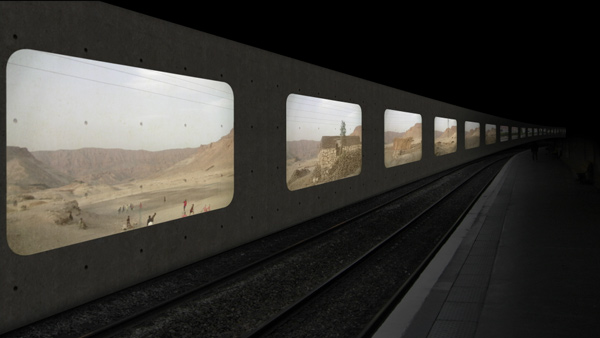
The
concept of the installation Itineracy emerged from a series of
reflections concerning the historical relationship between the railway
systems and the notions of simultaneity and universality as well as the
implications of these notions nowadays.
The concept of “Universal
Time” is a recent one. Before the nineteenth century, when a trip from
one country to another took days, and from one continent to another,
months, there was little need to coordinate the time between different
places. The introduction of standard time, in the early nineteenth
century, was closely related to the development of the railway system.
Just as the standardisation of time begets the idea of synchronisation,
the establishment of a universal time begets that of simultaneity.
Two hundred years later, we assume blindly that the entire globe is
permanently living a singular moment, a universal present. What is
more, we know that in economical as much as in ecological terms we are
tied to people situated in distant everyday realities and landscapes.
This condition is visually addressed by Itineracy.
Since our link to distant people is far from a simple given, particular
attention is conferred in the filming process to the subject of
borders, in terms of human, physical and political geography.
Subsequently, even if those borders remain present in the captured
landscapes, they are metaphorically abolished by the installation
structure, where new continuities and contiguities emerge constantly.
The screens being designed to suggest windows might affect the
interpretation of Itineracy, given the paradoxical nature of windows
themselves as closed openings. Following this logic, this installation
can be seen as a transparent opening which protects viewers from the
outside world as much as it projects them into it.
This piece is deliberately set to be multi-layered. Open to the public,
it intends to raise questions rather than to give answers. Hopefully it
will encourage unexpected interpretations. Ideally it shall be
captivating enough that viewers will ‘loose their train of thought’ or
even be tempted to miss their actual train.
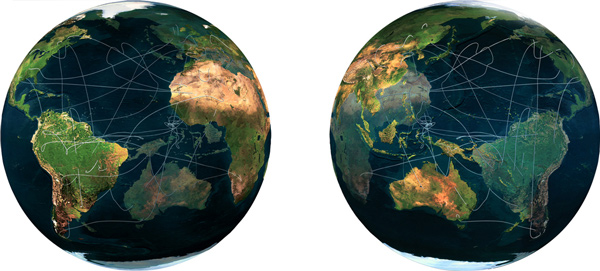
This
installation is related to western and eastern landscape traditions:
panoramas and rolled screens. Panoramic monumental imagery reached its
peak during the nineteenth century, when commercial panoramas were a
popular entertainment industry in several European and North American
cities. Special buildings were constructed to hold enormous circular
paintings that, with their heightened illusion, attracted the crowds.
Less static, traditional Chinese rolled screens entail both a manual
and visual act of unrolling. Amongst other subjects, descriptive and
narrative landscapes where remarkably executed for centuries in that type of scroll.
Itineracy
can be partially understood as an unrolled panorama in motion.
Comparably to panorama, it proposes a partial immersion. Comparably to
a scroll, it constitutes a device to record space. Composition in Itineracy
acquires an additional aspect, that of time, which becomes as a result
intrinsically tied to the editing process. Analogously, the editing
happens to be in every moment transversal, aware of the spatial
dimension.
The challenge of representing a new type of landscape, a ‘universal and
simultaneous’ one, confronts us to supplementary questions. Where to
and where from? or even, Why moving from here to there?-when one is
already everywhere. As a limited answer, Itineracy, unlike standard
films, does not have a beginning or an end. The final editing is
generative, explicitly a video data base permanently accessed and
displaying the film according to an underlying program. In order to
control the result to some extent but still give a chance to the
unattended, this program combines the pre-recorded sequences in a
partially ordered and partially random manner. This configuration
confers to Itineracy the possibility of permanent mutation and change.
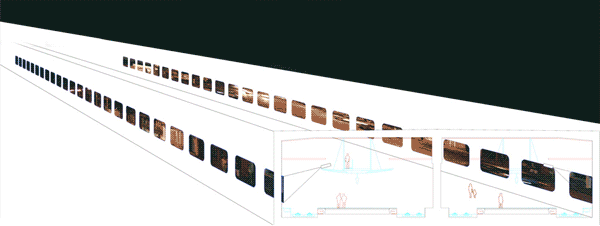
Idea- first drafts
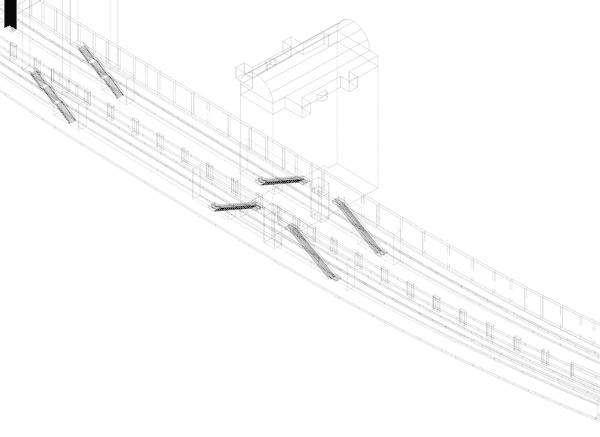
Project- sketches
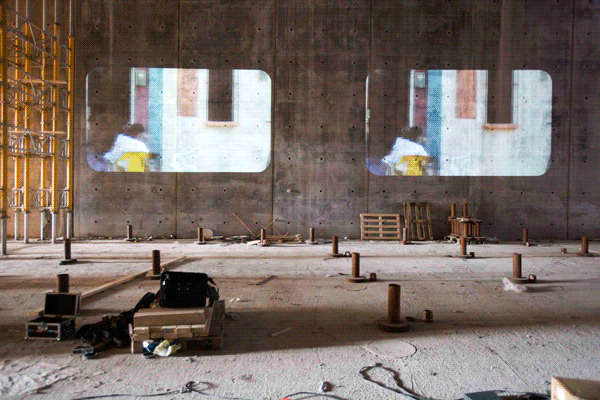
Tests in situ / Photos M.Diaz

Simulations
Downlad bigger versions: Left / Right
For more information write to